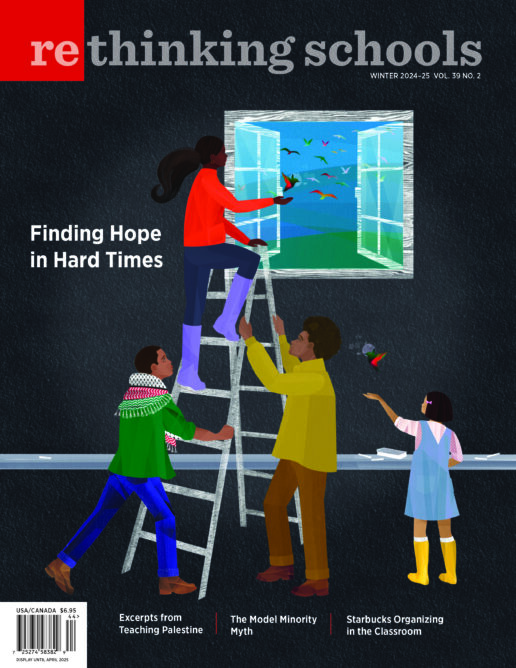Our picks for books, videos, websites, and other social justice resources 39.2
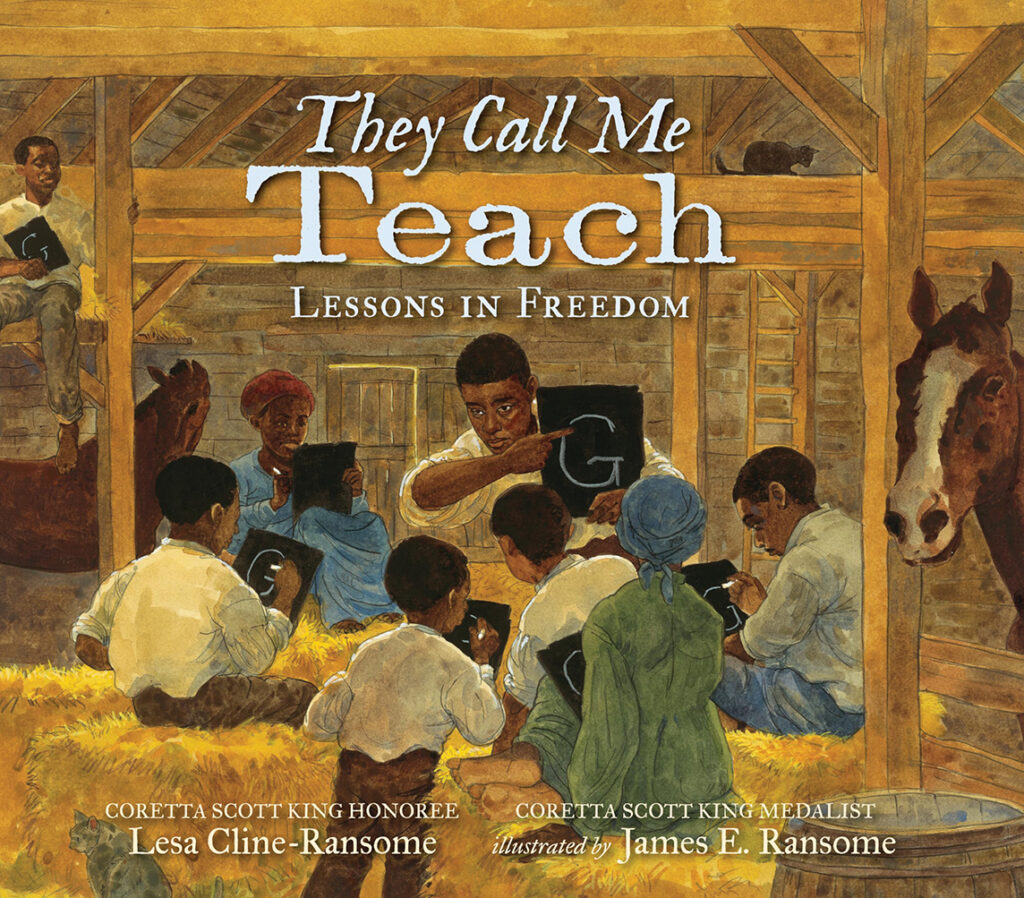
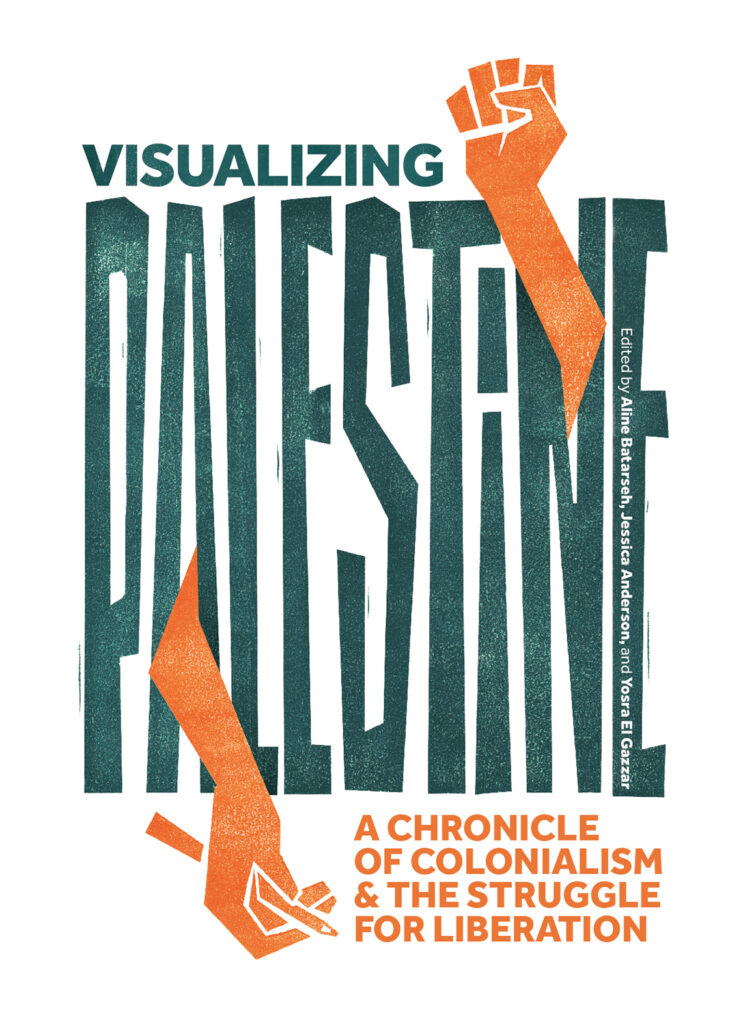
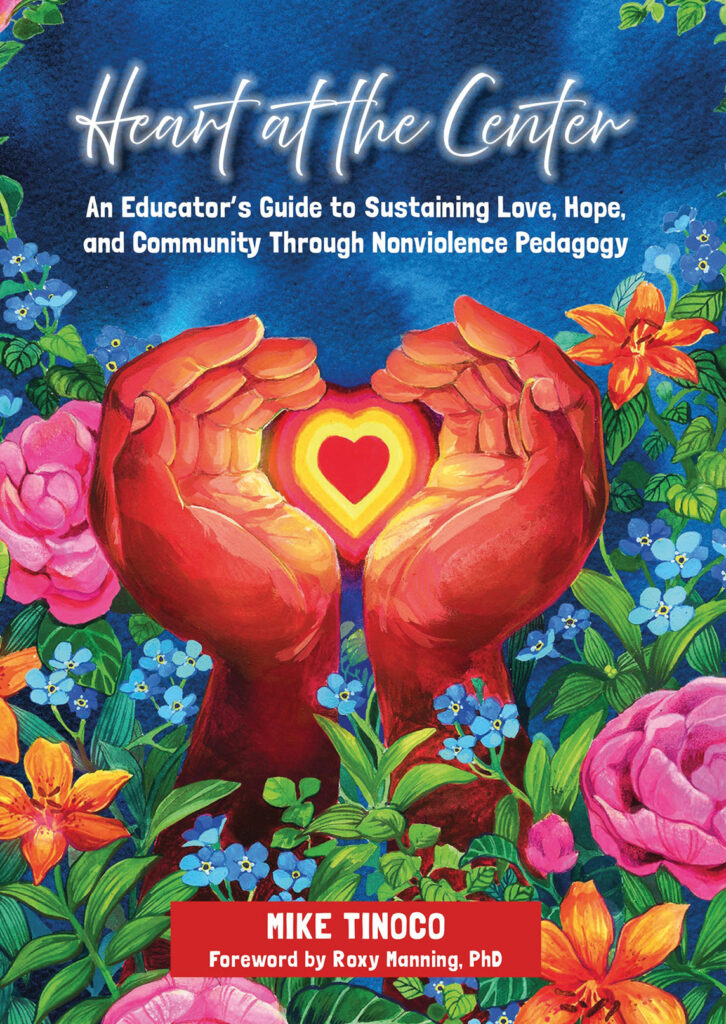
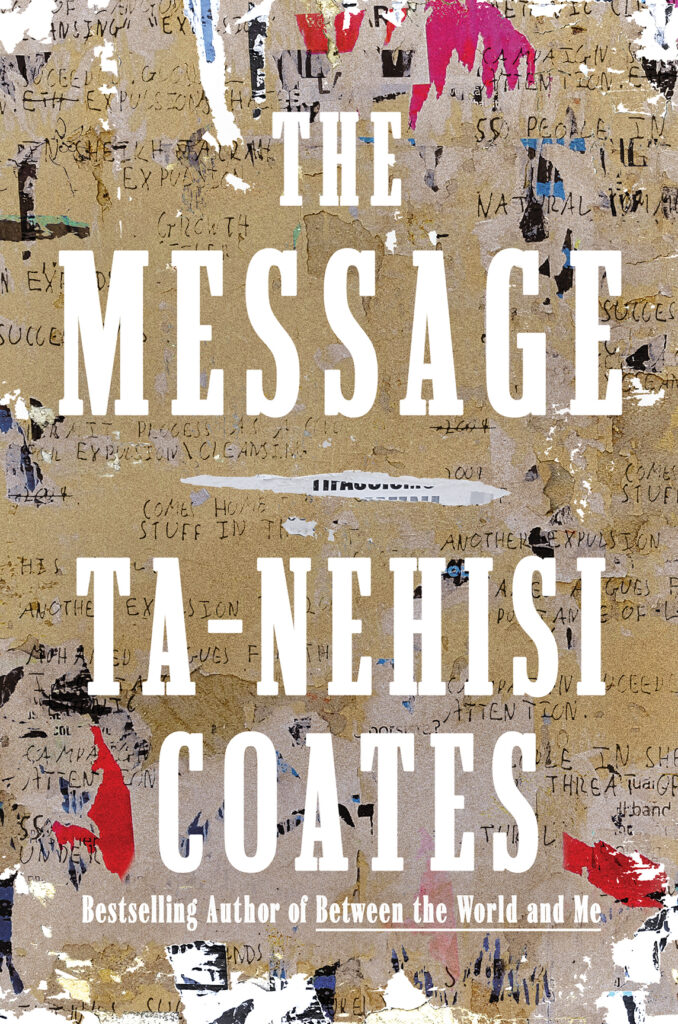
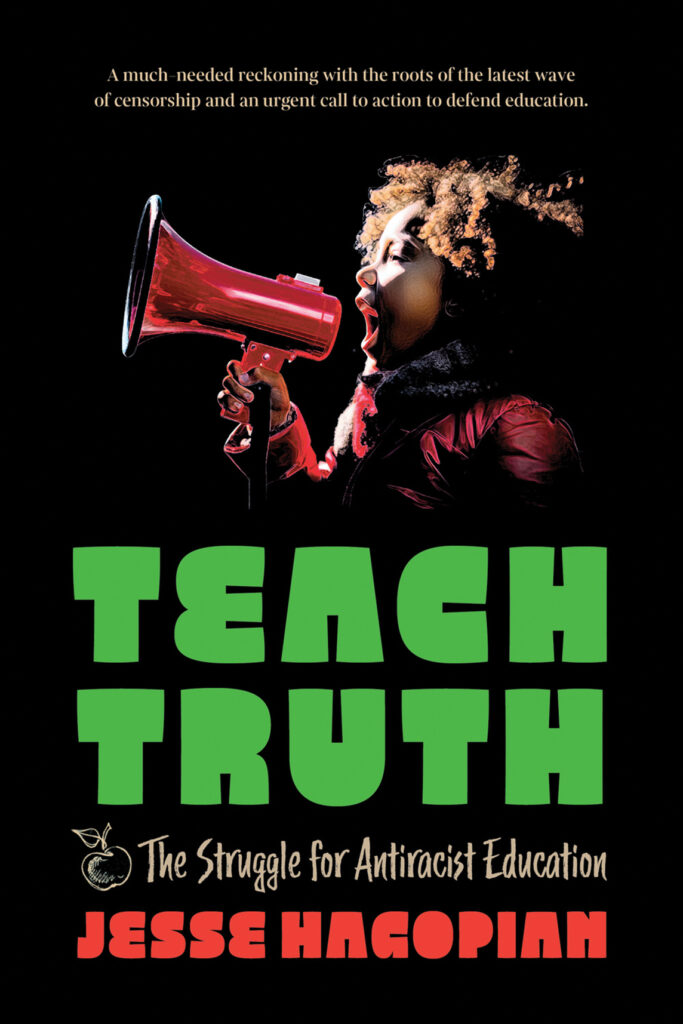
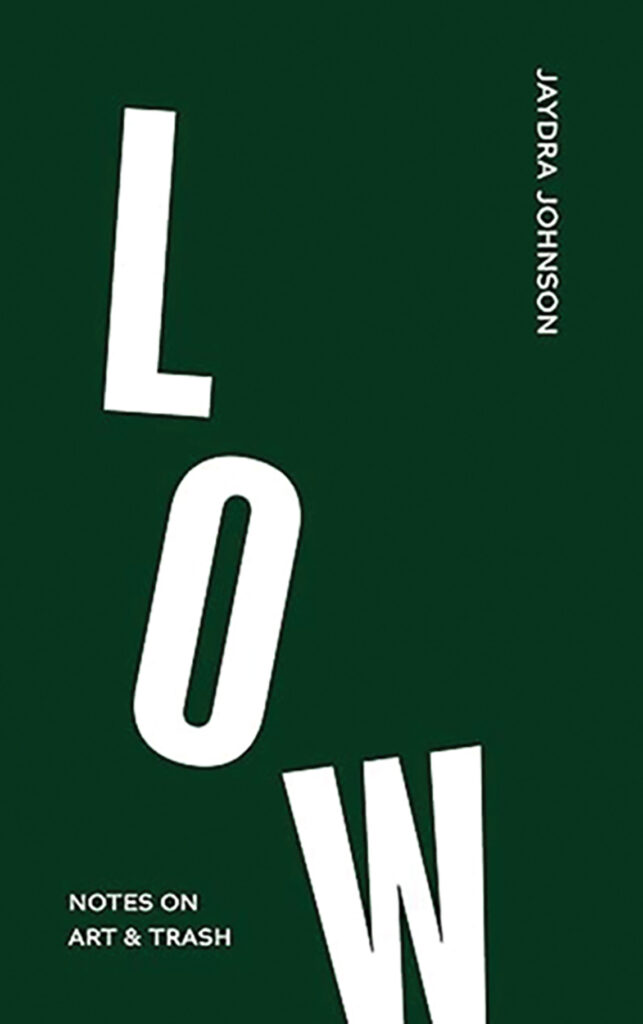
Picture Books

They Call Me Teach: Lessons in Freedom
By Lesa Cline-Ransome
Illustrated by James E. Ransome
(Candlewick Press, 2024)
40 pp.
Pithy verse and rich watercolor details introduce young readers to literacy as enslaved resistance in this picture book. An urgent yet straightforward first-person account, this book shows how one enslaved man, secretly named Teach, helps others learn to read and write wherever he can — in a stable, in a kitchen, in the dirt, at a log cabin church. Organized by the days of the week, as store clerk on Saturday, Teach recounts: “I write up receipts/ for Master’s deliveries/ . . . In ’tween/ I write up a receipt/ for her freedom.” This picture book will spark discussions about enslavement, literacy as resistance, and courage. At the back, there is an author’s note that offers context on African American resistance to enslavement through education along with a list of more books on resistance.
Curriculum

Visualizing Palestine
Edited by Aline Batarseh, Jessica Anderson, and Yosra El Gazzar
(Haymarket Books, 2024)
376 pp.
In the spring 2024 issue of Rethinking Schools, we recommended the valuable website of Visualizing Palestine, a nonprofit “dedicated to using data and research to visually communicate Palestinian experiences to provoke narrative change.” In line with this mission, Visualizing Palestine has drawn on material from their website and more to offer a graphic and student-friendly portrayal of Palestinian social reality in book form. Every page offers a visual story of life in Palestine and Israel. One water faucet graphic reveals the water inequality between Israel — 230 liters per person/per day — and Israeli genocide-stricken Gaza: three liters per person/per day. This, for people’s basic needs of hydration, cooking, and hygiene. Historical graphics illustrate instances of resistance, comparing hunger strikes in apartheid South Africa and apartheid Palestine-Israel. Not only do the illustrations in Visualizing Palestine teach students about the unequal and deadly relationship between Israel and Palestine, teachers can also use the graphics as prompts for students to create their own data-informed posters — about other countries or other eras. It is hard to overemphasize what a useful resource this book is.

Heart at the Center: An Educator’s Guide to Sustaining Love, Hope, and Community Through Nonviolence Pedagogy
By Mike Tinoco
(Routledge, 2025)
335 pp.
Part autobiography, part narrative, part workbook, and part textbook, Mike Tinoco’s Heart at the Center uses nonviolence pedagogy as a springboard for developing classroom practices that support thriving students and sustainable teaching. Chock full of images, student work, self-reflective activities, and stories about teaching and learning, Heart at the Center offers an important and unique contribution to understanding teaching for social justice.

The Message
By Ta-Nehisi Coates
(One World, 2024)
232 pp.
Coates’ wonderful new book is ostensibly composed as an essay for his Howard University writing students — addressed as “Comrades” — fulfilling a two-year old promise to do the work that he had assigned them. Drawn on three trips — to Senegal, South Carolina, and Palestine — The Message is an expansive meditation on writing and politics. But in describing what it means to be a writer, Coates also articulates what it means to be a teacher through many astute quotes and valuable lessons: “Great canons angle toward great power, and the great privilege of great power is an incuriosity about those who lack it.” Teachers: Create a curriculum of curiosity about the oppressed. “History is not inert but contains within it a story that implicates or justifies political order.” Teachers: Your history curriculum should interrogate and critique the political order. The attack on anti-racist teaching “works not simply to misinform but to miseducate; not just to assure the right answers are memorized but that the wrong questions are never asked.” Teachers: Create a curriculum of “wrong questions,” whose exploration will illuminate the structures and ideas that stifle equality. The book’s final section chronicles Coates’ trip to Palestine. His gaze is informed by a lifetime of thinking and writing about racial injustice: “For as sure as my ancestors were born into a country where none of them was the equal of any white man, Israel was revealing itself to be a country where no Palestinian is ever the equal of any Jewish person anywhere.” The punchline of Coates’ trips to Senegal, South Carolina, and Palestine is also a message about teachers’ responsibility to teach honestly and fearlessly: We are “tasked with nothing less than saving the world.”
Activism

New Voices Campaigns
Student Press Law Center
newvoices@splc.org
Since 1974, the Student Press Law Center has worked to “promote, support, and defend the First Amendment and press freedom rights of high school and college journalists and their advisors.” That work became tougher after the Supreme Court restricted students’ free speech rights in its 1988 Hazelwood v. Kuhlmeier decision. Recently, SPLC’s New Voices campaigns, led by student journalists and youth advocates, have succeeded in passing laws that seek to reverse Hazelwood’s impact. Last May, Minnesota became the 18th state to pass such a law. The measure says that “public 6th- through 12th-grade student journalists determine the content published in school-sponsored student media and [the law] protects them from censorship except in certain rare circumstances. The law also shields student media advisors from professional retaliation for refusing to unlawfully censor their students’ work.” Similar legislation is pending in nine states and six more have New Voices teams working to introduce such bills. To learn the status of efforts in your state or to get involved, contact SPLC’s New Voices Advocacy and Organizing Team at newvoices@splc.org.
From Rethinking Schools Editors and Writers

Teach Truth
By Jesse Hagopian
(Haymarket Books, 2025)
285 pp.
Rethinking Schools editor Jesse Hagopian’s Teach Truth is a manifesto to defend education from the billionaires and bigots. Hagopian movingly chronicles today’s relentless — and sometimes violent — attacks on teaching with a conscience. (No doubt about to become much worse.) This is a story of elites desperate to use schools to legitimate race and class privilege — and ultimately to discredit and defund public education. Hagopian gives us language to describe the pushback to anti-racist education and what it means to be a truth-teacher during difficult times. At the heart of Teach Truth are the stories of courageous students and educators determined to make schools sites of curiosity, equality, and justice. The book is sharp, story-rich, and carefully researched. Hagopian’s Teach Truth is a warning — but also a song of hope and a call to action.

Low: Notes on Art & Trash
By Jaydra Johnson
(Fonograf, 2024)
147 pp.
“I hope I never become inured to violence,” Jaydra Johnson writes toward the end of her magnificent first book. Johnson is a language arts teacher, artist, poet, and Rethinking Schools contributor. Low is a collection of essays — part autobiography, part prose poem, part critique of the lives and stuff that we discard, hide, and destroy too easily. “I was very young, perhaps 7 or 8 years old,” she writes, “when I came to understand that I was not just bad, but a special kind of bad. I was trash.” In wrenchingly honest, intimate storytelling, Johnson explores the violence of how schools, the criminal justice system, and a capitalist economy turn human beings into trash. But she also celebrates how art can reveal and resist.

